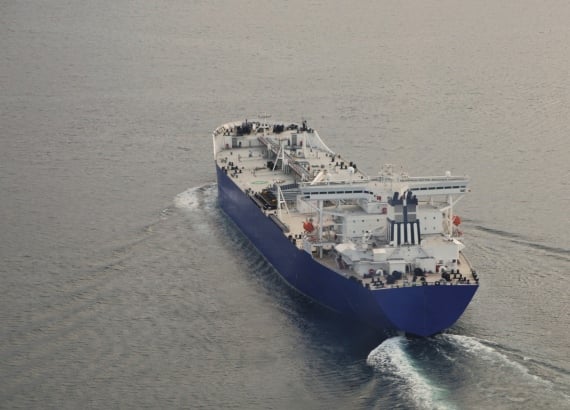
Source: Thinkstock
There are far more countries with no or very little oil than those countries with deposits that can be developed and used internally or exported. According to the U.S. Energy Information Administration (EIA), of the world’s 216 nations only 99 have any oil reserves at all. And only about 40 nations have proved reserves totaling more than a tiny 1 billion barrels.
Global consumption of crude oil grew from around 83.2 million barrels a day to 90.4 million in the 10-years from 2004 to 2013, according to the EIA. With the exceptions of 2008 and 2009, when the global financial crisis stifled economic growth in much of the world, oil consumption has been rising, but about 65% of the increase is from the developing economies of China and India. China consumed about 6.44 million barrels a day in 2004 and 10.12 million barrels a day in 2013, while India added about a million barrels a day of consumption in the same period.
About 80% of world oil consumption is attributable to transportation by road, rail, sea and air. As a transportation fuel, products derived from oil are difficult to replace due to their high energy content, their transportability and their relative safety.
As a fuel for generating electricity, oil’s role has largely been relegated to one of meeting peak demand for short periods, but there are some exceptions. Saudi Arabia, for instance, currently generates 100% its electricity by burning oil or natural gas. Japan, following its nuclear disaster in 2011, is another temporary exception.
Among many developed countries, oil consumption is falling, due in part to slow economic growth that tamps down demand for crude. Another contributor to slowing demand is more fuel-efficient motor vehicles. As for future demand projections, it is too early to know how much of the decline in consumption is due to structural changes like more fuel-efficient vehicles and how much to a weak global economy. The answer to those questions will indicate both the direction and the strength of crude oil demand in the years to come.
ALSO READ: 5 Things That Could Save Russia From Recession in 2015
We have looked at 10 rich countries as measured by gross domestic product (GDP) that lack any significant amount of proved oil reserves. Data on GDP are drawn from the International Monetary Fund’s World Economic Outlook October 2014 and the CIA World Factbook, while information on oil reserves and electricity generation comes from the EIA and data on consumption was taken from the 2014 edition of the BP Statistical Review of World Energy.
Combined, the 10 nations on this list have about 1.67 billion barrels of proved reserves, enough to meet U.S. demand for about three months or global demand for a little more than two weeks. For all intents and purposes, that amounts to no oil.
10. Sweden
> GDP rank: 22nd largest
> 2014 GDP (est.): $559 billion
> Proved oil reserves: none
> Oil consumption (2013): 836,000 barrels a day
> Percentage of global total daily consumption: 0.3%
Sweden, though not a member of the euro system, depends on the eurozone as the largest customer for its exported goods. The financial crisis and its aftermath hit the country hard, sending it into recession until 2010 and cutting GDP growth to less than 1% in 2013. Oil consumption fell 6% between 2009 and 2013. Electricity generation from fossil fuels accounted for 13% of the nation’s total in 2010, while nearly half comes from hydroelectric plants and another quarter comes from nuclear generation. So, its lack of crude has caused it to turn to other sources for energy.
9. Switzerland
> GDP rank: 20th largest
> 2014 GDP (est.): $679 billion
> Proved oil reserves: none
> Oil consumption (2013): 249,000 barrels a day
> Percentage of global total daily consumption: 0.3%
Switzerland fell into recession in 2008, along with nearly every other developed country, but started a recovery in 2010 based on a zero-interest rate policy that has forced the Swiss National Bank to intervene to prevent the Swiss franc from rising and pricing Swiss exports too high to be competitive. GDP growth was about 2% in 2013. Oil consumption is up about 1.4% since 2009. More than two-thirds of the country’s electricity is generated from hydroelectric plants and another 24% is generated from nuclear plants. Electricity generation from fossil fuels accounts for just 3.1% of the country’s power, while renewables account for 5.5%.
ALSO READ: The Heaviest-Drinking Countries in the World
8. Turkey
> GDP rank: 18th largest
> 2014 GDP (est.): $813.3 billion
> Proved oil reserves: 295 million barrels
> Oil consumption (2013): 714,000 barrels a day
> Percentage of global total daily consumption: 0.8%
Turkey weathered the financial crisis of 2008 and 2009 well, returning to strong growth of around 9% in 2010 and 2011. Since then annual growth has moderated to around 3% to 4%, mainly on the strength of the country’s exports. A number of pipelines crisscross Turkey, transporting oil and gas supplies to Europe and to Turkish ports, where it is loaded on ships bound primarily for Asia. Since 2009, oil consumption has declined by 7.7%. Turkey generates nearly two-thirds of its electricity from fossil fuels and the rest from hydroelectric plants.
7. Netherlands
> GDP rank: 16th largest
> 2014 GDP (est.): $808.4 billion
> Proved oil reserves: 302 million barrels
> Oil consumption (2013): 898,000 barrels a day
> Percentage of global total daily consumption: 1.0%
The Netherlands nationalized two banks and injected billions of euros into other financial institutions in 2008 to stave off a collapse of the country’s financial system. The government implemented an economic stimulus package that increased the national debt to a level that the government could not handle, which resulted in the adoption of austerity measures that led to an estimated 0.8% contraction in the overall economy in 2013. Oil consumption has dropped about 1.8% since 2009. Fossil fuels account for 85% of the country’s electricity generation.
ALSO READ: 10 Dying and 10 Thriving U.S. Industries
6. Spain
> GDP rank: 14th largest
> 2014 GDP (est.): $1.4 trillion
> Proved oil reserves: 150 million barrels
> Oil consumption (2013): 1.2 million barrels a day
> Percentage of global total daily consumption: 1.4%
Spain’s economy went into free fall when real estate values plummeted in 2008. The country came out of a second recession in 2013, and the economy has grown on the strength of domestic demand. Spain’s central bank recently raised its estimate of GDP growth from 1.9% to 2.0%. Unemployment remains a huge problem, with a jobless rate of 23.7% at the end of July. Between 2009 and 2013, Spain’s oil consumption dropped nearly 18%, the most of any country on this list. Nearly 50% of the country’s electricity is generated from fossil fuels and slightly more than 25% is generated from renewable sources.
5. South Korea
> GDP rank: 13th largest
> 2014 GDP (est.): $1.45 trillion
> Proved oil reserves: none
> Oil consumption (2013): 2.46 million barrels a day
> Percentage of global total daily consumption: 2.6%
Earlier this month, South Korea’s government cut its economic growth forecast for 2014 from 3.7% to 3.4% and lowered its forecast for 2015 growth from 4.0% to 3.8%. For a country that must import every gallon of oil it consumes, falling crude oil prices are a significant benefit. At $90 a barrel, importing 2.5 million barrels a day costs the country about $82 billion a year; at $65 the total drops to around $59 billion. The country’s oil consumption has risen 6.2% since 2009. South Korea generates 75% of its electricity from fossil fuels.
4. Italy
> GDP rank: eighth largest
> 2014 GDP (est.): $2.13 trillion
> Proved oil reserves: 560 million barrels
> Oil consumption (2013): 1.308 million barrels a day
> Percentage of global total daily consumption: 1.5%
Italy’s economy is in recession for the third time since 2008, after third-quarter GDP fell 0.5%, marking the 13th consecutive quarter that GDP has failed to rise. The country’s debt rating was just lowered to one notch above junk at S&P, but the ratings agency thinks the country will see a modest recovery next year. The country consumed about 15% less oil in 2013 than in 2009. Italy generates 65% of its electricity from fossil fuels and 16% from renewables, with hydroelectric generation accounting for the rest.
ALSO READ: The Most Corrupt Countries in the World
3. France
> GDP rank: fifth largest
> 2014 GDP (est.): $2.9 trillion
> Proved oil reserves: 90 million barrels
> Oil consumption (2013): 1.683 million barrels a day
> Percentage of global total daily consumption: 1.9%
The French economy is expected to grow just 0.1% in the fourth quarter of 2014, and even with help from low oil prices and a weak euro, real GDP growth for 2014 is forecast at 0.4%. The forecast for the first half of 2015 is just 0.3%. France may benefit less from low oil prices because so much of its energy is via nuclear generation, which lowers demand for heating oil. About 80% of the country’s economy is service-oriented, so demand for fuel to move goods around is limited. Since 2009, France has reduced consumption by 5.4%. Just 22% of the country’s electricity is generated from fossil fuels, while nearly 51% comes from nuclear power plants.
2. Germany
> GDP rank: fourth largest
> 2014 GDP (est.): $3.82 trillion
> Proved oil reserves: 232 million barrels
> Oil consumption (2013): 2.382 million barrels a day
> Percentage of global total daily consumption: 2.7%
Germany, like nearly every other Western European nation, has been teetering on the edge of another recession. This may be avoided in part because crude oil prices have dropped and the stronger dollar has made the country’s manufactured goods more appealing. Economic growth in the country has been forecast to rise 1% in 2015, better than this year’s expected growth, but still slow by historical standards. German crude oil consumption has dropped by about 1.3% since 2009. Slightly more than half of German electricity generation is produced from fossil fuels and a whopping 36% comes from renewable sources.
ALSO READ: 10 Countries Spending the Most on the Military
1. Japan
> GDP rank: third largest
> 2014 GDP (est.): $4.77 trillion
> Proved oil reserves: 44 million barrels
> Oil consumption (2013): 4.551 million barrels a day
> Percentage of global total daily consumption: 5.0%
Japan ranks only behind the United States and China in both GDP and daily consumption of oil, but its proved reserves are essentially zero, compared with U.S. reserves of nearly 31 billion barrels and Chinese reserves of about 24.5 billion barrels. The amount of oil Japan consumes has dropped by about 150,000 barrels a day, compared with 2012 when the country burned more oil to generate electricity following the nuclear disaster in 2011. The country consumed about 3.9% more oil in 2013 than in 2009. Virtually every barrel is imported. In 2012 oil generated 47% of the country’s electricity, a large amount but down from 80% in the 1970s. Coal and natural gas account for another 47% of generation. Nuclear generation has dropped from 26% to around 1% since 2011.
Take This Retirement Quiz To Get Matched With A Financial Advisor (Sponsored)
Take the quiz below to get matched with a financial advisor today.
Each advisor has been vetted by SmartAsset and is held to a fiduciary standard to act in your best interests.
Here’s how it works:
1. Answer SmartAsset advisor match quiz
2. Review your pre-screened matches at your leisure. Check out the
advisors’ profiles.
3. Speak with advisors at no cost to you. Have an introductory call on the phone or introduction in person and choose whom to work with in the future
Take the retirement quiz right here.
Thank you for reading! Have some feedback for us?
Contact the 24/7 Wall St. editorial team.



